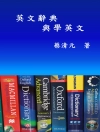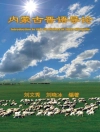Foreword by Sir Philip Pullman, CBE, FRSL
Illustrated foreword by Chris Riddell, OBE
The burgeoning field of visual literacy can be universally understood across a wide variety of cultural backgrounds, regardless of traditional literacy levels. A key tool for navigating digital devices, there is often an antipathy surrounding visual literacy borne out of stigma and at times, intimidation.
Seeing Sense brings together research and best practice from different organisations and institutions all over the world to showcase the role of visual literacy as a tool for promoting reading. It will be key in raising awareness among librarians and education practitioners, promoting aspiration and achievement among the children and young people they work with.
Coverage includes:
- an overview of visual literacy as a tool for reading development
- the role of visual literacy in design and display within libraries and resource centres
- advice for library and information professionals on how to gain greater confidence in using and understanding visual literacy as part of strategies to engage readers
- a number of practical case studies to illustrate the power and potency of visual literacy as a key tool for making reading accessible, engaging, and appealing for all.
Daftar Isi
Contents
List of figures, boxes and case studies
Acknowledgements
Foreword
Philip Pullman
1. In the Frame: what is visual literacy and why does it matter?
An introduction to Seeing Sense
Origins of visual literacy
Visual literacy in the digital age
Becoming visually literate
Cave to computer screen: a potted guide to visual literacy in society
Types of visual literacy
2. The Big Picture: terminology for talking about and critiquing illustration
The building blocks for visual literacy
The anatomy of a picture book
The role of colour
Media, style and techniques
Features of visual narratives
Features in graphic novels
3. The Reading Journey: the developmental stages of reading
The emerging pre-reader
The novice reader
The decoding reader
The fluent, comprehending reader
The expert reader
A framework for visual competencies
Visual literacy in practice
4. Close Inspection: influences and insights into people and processes that shape visual narratives
Agents
Publishers
Graphic design and print
Harmony in words and pictures
Representation and translation
Pictures mean business
A comic perspective
Graphic novels
5. Windows into Worlds: the importance of visual representation and inclusion
Cultural diversity
Gender
Sexuality
Mental health
Empathy
Learning needs
Inclusion
Sight
Colour blindness
6. Prize Winning Pictures: an exploration of awards and honours
The CILIP Kate Greenaway Medal
The Macmillan Prize for Illustration
The Klaus Flugge Prize
The Excelsior Award
Regional book awards
International Awards
The Biennial of illustration, Bratislava
The Bologna Ragazzi Award
The Caldecott Medal
The Children’s Book Council of Australia Book of the Year Awards
The Little Hakka Awards
The Children’s Laureate
7. Looking to Learn: an insight into visual literacy for information
The power of visual information
Finding fun in learning
Creating visually rich learning environments
Partnerships to create visual learning opportunities
8. A Room with a View: making the most of visual literacy in libraries and settings
Stock
Services
Space
Case Studies
Conclusion
Afterword
Nick Sharratt
Glossary
References
Index
Tentang Penulis
Jake Hope is a reading development and children’s book consultant with a keen interest in librarianship, visual literacy, diversity and children’s books. Named as one of top ten librarians of the future in the United Kingdom’s ‘Love Libraries Campaign’, he has been a regular reviewer and commentator on children’s books for numerous publications and websites, including leading children’s book journal ‘Books for Keeps’ and the UK’s trade magazine ‘The Bookseller.’ As Reading and Learning Development Manager for Lancashire County Council, he designed and delivered a year-long promotion of visual literacy as well as the ‘Lancashire Reading Trail’, an illustrated scheme aimed at encouraging children to read while fostering an awareness of local geography and culture. He has judged numerous book awards, including the CILIP Carnegie and Kate Greenaway Medals, for whom he now Chairs the Working Party.












